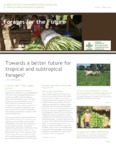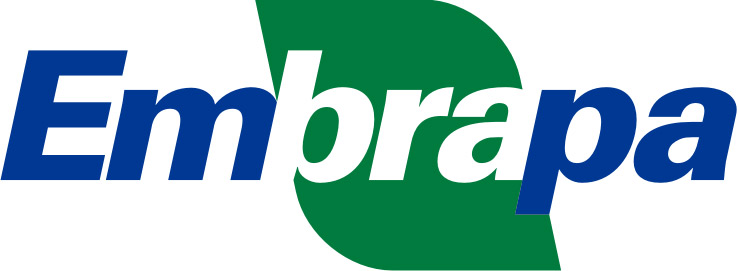Please use this identifier to cite or link to this item:
http://www.infoteca.cnptia.embrapa.br/infoteca/handle/doc/1066207Full metadata record
| DC Field | Value | Language |
|---|---|---|
| dc.contributor.author | JANK, L. | pt_BR |
| dc.contributor.author | VALLE, C. B. do | pt_BR |
| dc.contributor.author | BARRIOS, S. C. L. | pt_BR |
| dc.contributor.author | SANTOS, M. F. | pt_BR |
| dc.contributor.author | SIMEÃO, R. M. | pt_BR |
| dc.date.accessioned | 2017-03-06T11:11:11Z | pt_BR |
| dc.date.available | 2017-03-06T11:11:11Z | pt_BR |
| dc.date.created | 2017-03-06 | pt_BR |
| dc.date.issued | 2016 | pt_BR |
| dc.identifier.citation | Forages for the future, n. 1, 2016. | pt_BR |
| dc.identifier.uri | http://www.infoteca.cnptia.embrapa.br/infoteca/handle/doc/1066207 | pt_BR |
| dc.description | Brazil is essentially an agricultural country with 170 Mha of pastures, of which 50 Mhaare native and 100 Mha are cultivated. Brazil?s cattle herd is 208 million head, the largest commercial cattle herd in the world and the largest beef exporter. Most cattle are raised on pastures, observing animal welfare conditions, and only 11% of the slaughter is of animals finished in feedlots. | pt_BR |
| dc.language.iso | eng | eng |
| dc.rights | openAccess | eng |
| dc.subject | Guineagrass germplasm | pt_BR |
| dc.title | Guineagrass breeding in Brazil. | pt_BR |
| dc.type | Artigo na mídia | pt_BR |
| dc.date.updated | 2017-03-06T11:11:11Z | pt_BR |
| dc.subject.nalthesaurus | forage grasses | pt_BR |
| riaa.ainfo.id | 1066207 | pt_BR |
| riaa.ainfo.lastupdate | 2017-03-06 | pt_BR |
| dc.contributor.institution | LIANA JANK, CNPGC; CACILDA BORGES DO VALLE, CNPGC; SANZIO CARVALHO LIMA BARRIOS, CNPGC; MATEUS FIGUEIREDO SANTOS, CNPGC; ROSANGELA MARIA SIMEAO RESENDE, CNPGC. | pt_BR |
| Appears in Collections: | Artigo de divulgação na mídia (CNPGC)  | |
Files in This Item:
| File | Description | Size | Format | |
|---|---|---|---|---|
| Towardsabetterfuture.pdf | 1,17 MB | Adobe PDF |  View/Open |









